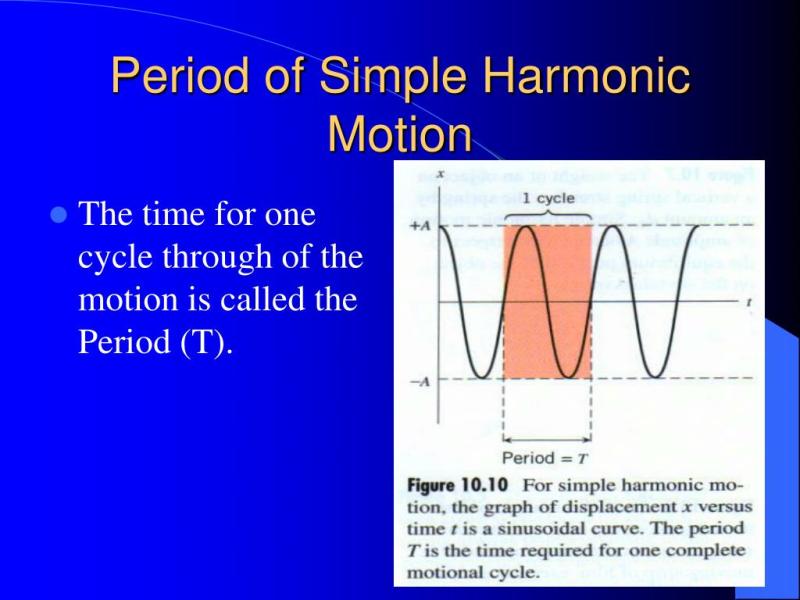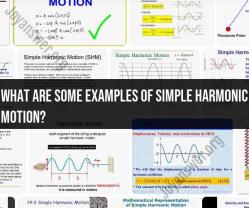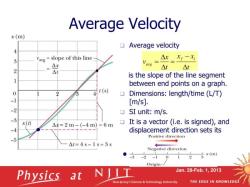What is simple harmonic motion in simple terms?
Simple Harmonic Motion (SHM) is a type of repetitive back-and-forth motion that occurs when a restoring force proportional to the displacement of an object acts on it. In simpler terms, it's a way objects move when they are pushed or pulled back to a central position, and this process repeats over and over.
Here are the key points to understand about Simple Harmonic Motion:
Restoring Force: When you push or pull an object away from its resting or equilibrium position, there is a force that tries to bring it back. This force is called the restoring force.
Proportional to Displacement: The restoring force is directly proportional to how far the object is from its equilibrium position. The farther you move it, the stronger the force trying to bring it back.
Periodic Motion: The motion is periodic, meaning it repeats at regular intervals. The object moves back and forth, crossing the equilibrium position each time.
Examples: Simple Harmonic Motion can be observed in various real-life examples, such as a swinging pendulum, a mass-spring system, or the motion of a vibrating guitar string.
Equation: The mathematical representation of simple harmonic motion often involves sinusoidal functions, like sine or cosine. The displacement of the object as a function of time can be described using these mathematical expressions.
Frequency and Amplitude: In SHM, the frequency (how often the motion repeats) and the amplitude (the maximum displacement from equilibrium) are important parameters that describe the characteristics of the motion.
Understanding simple harmonic motion is fundamental in physics and is applicable to many systems and phenomena in the natural world. Whether it's the swinging of a playground swing or the oscillation of a car's suspension system, recognizing and describing simple harmonic motion helps scientists and engineers understand and predict the behavior of dynamic systems.
Simple Harmonic Motion: A Symphony of Back-and-Forth
1. Basic Explanation:
Imagine swinging on a playground swing. Back and forth you go, reaching a maximum height before returning to the center, then reaching the other maximum height, and so on. That's simple harmonic motion (SHM)! It's a special type of periodic motion where an object repeatedly oscillates around a central point due to a restoring force that's directly proportional to its displacement from that point.
2. Simple Definition:
SHM is like a tug-of-war between you and the swingset chains. The further you swing away from the center, the stronger the chains pull you back (the restoring force). This force keeps you oscillating around the center point without ever truly coming to rest.
3. Key Characteristics:
- Periodic: SHM repeats itself regularly, like the tick-tock of a clock.
- Restoring force: A proportional force always pulls the object back towards the center.
- Equilibrium point: This is the central point where the object has no restoring force acting on it.
- Amplitude: The maximum displacement from the equilibrium point.
- Frequency: The number of oscillations completed in a unit of time (usually seconds).
- Period: The time it takes to complete one full oscillation.
4. Common Examples:
- Mass-spring system: A mass attached to a spring is a classic example. The spring pulls the mass back when it stretches, creating SHM.
- Pendulum: A swinging weight on a cord oscillates back and forth due to gravity, another example of SHM.
- Sound waves: Sound waves traveling through air or water exhibit SHM of molecules.
- Musical instruments: Vibrating strings in guitars or tuning forks vibrate with SHM, producing musical notes.
5. Differences from Other Motions:
- Periodic vs. Non-periodic: Unlike bouncing a ball (non-periodic), SHM always repeats at a constant rate.
- Restoring force vs. Friction: Unlike rolling a ball downhill (decelerating due to friction), SHM has a force that keeps the motion going.
- Simple vs. Complex: Compared to complex motions like planetary orbits, SHM is a simpler form of oscillation with predictable patterns.
Remember, SHM is a fundamental concept in physics and many other fields. Understanding its characteristics and how it manifests in diverse situations can deepen your appreciation for the rhythmic order within the seemingly chaotic world.
I hope this simplified explanation helps you grasp the essence of simple harmonic motion!











